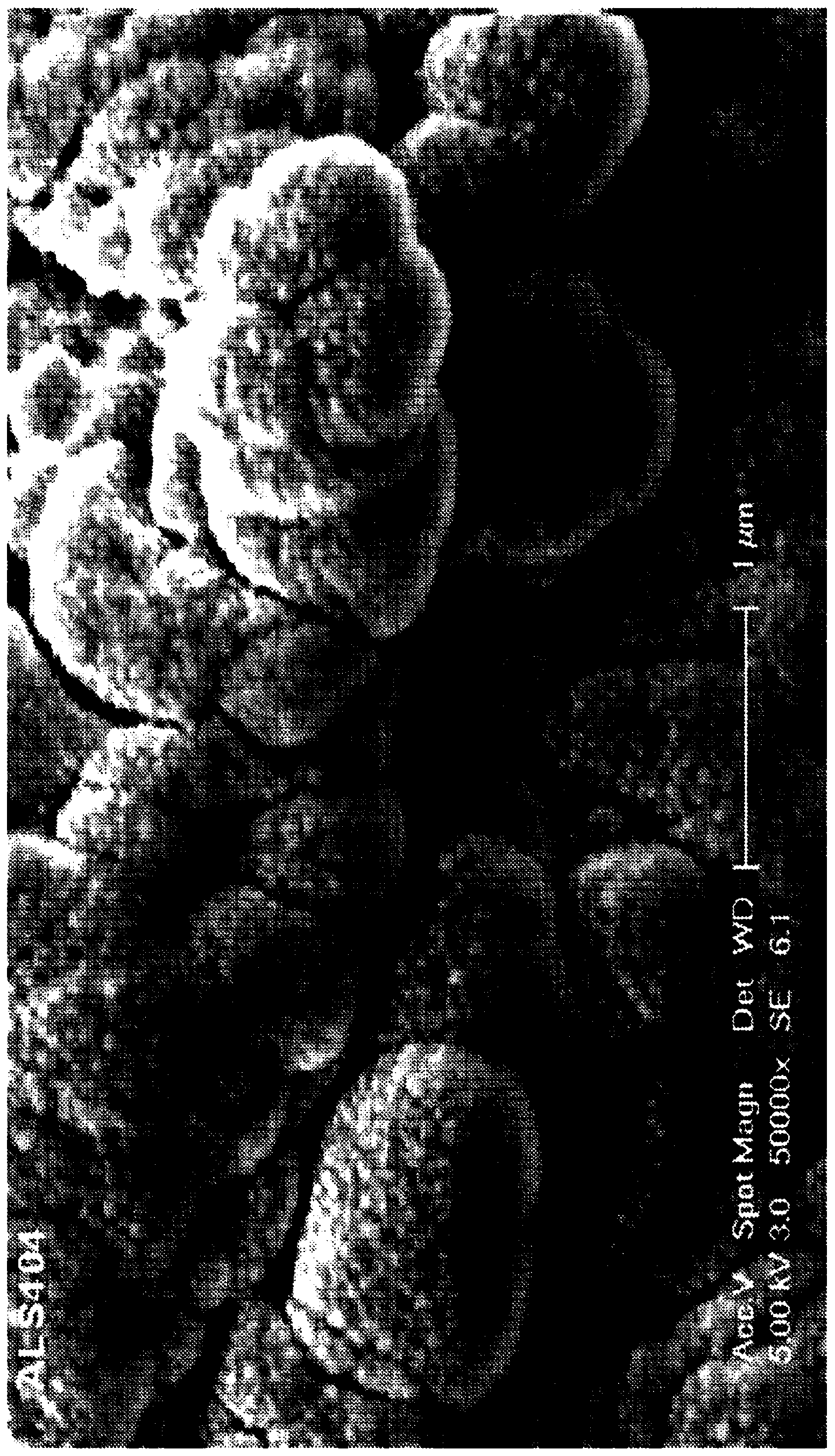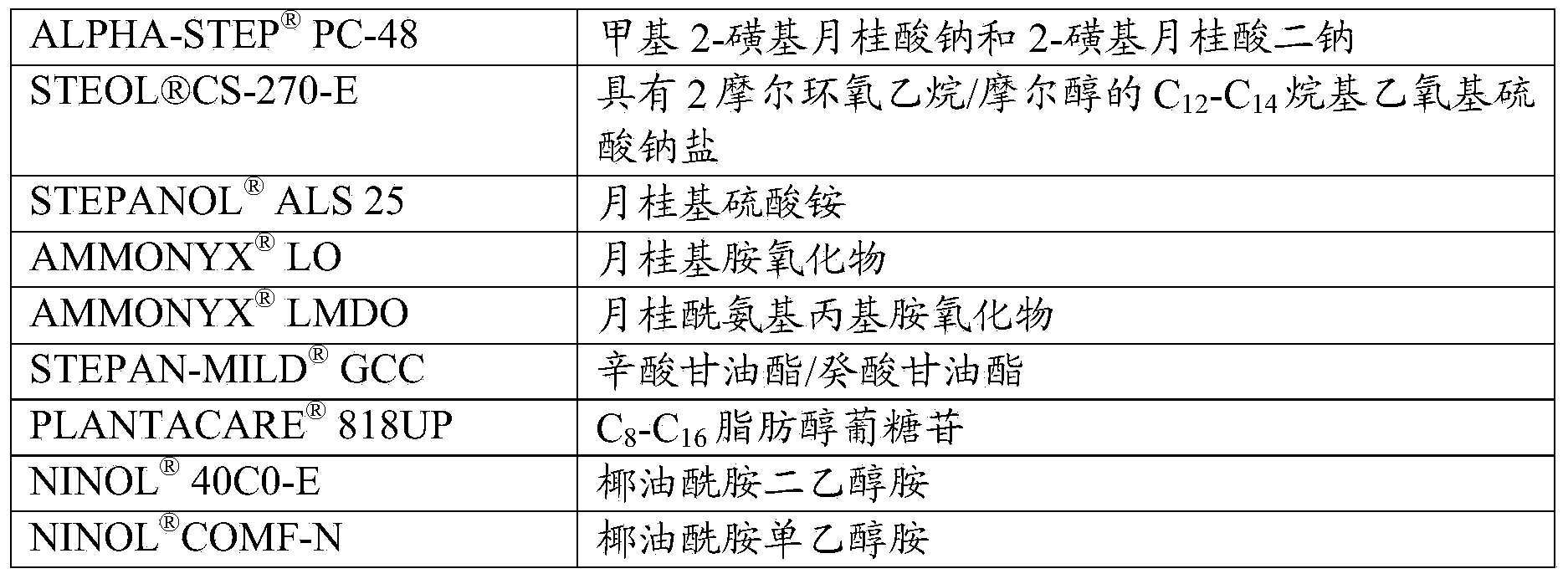Structured surfactant suspending systems
A structured surface, surfactant technology, applied in cosmetics, cosmetic formulations, chemical instruments and methods, etc., can solve the problems of limited visual effect, low attractiveness, etc.
- Summary
- Abstract
- Description
- Claims
- Application Information
AI Technical Summary
Problems solved by technology
Method used
Image
Examples
Embodiment 1
[0050] By mixing amine oxide to caprylic / capric glyceryl in a ratio of 1:3 to 2:1 LO amine oxide and GCC Caprylic Glyceride / Capric Glyceride to prepare a series of formulations. The total surfactant for each formulation was 15 wt%. Table B shows the ratio of each surfactant and the visual results of each formulation.
[0051] Form B: w / w blend of GCC in water (15% total surfactants)
[0052]
[0053]
[0054] A ratio of amine oxide to caprylic / capric glycerides of 1:1.5 to 1.25:1 resulted in structured liquids in which clarity increased with increasing amount of amine oxide. The highest clarity was obtained at 1.25:1 w / w amine oxide: caprylic / capric glyceryl.
Embodiment 2
[0056] Glycerin was added to a 1.25:1 w / w blend of amine oxide: caprylic / capric glycerides to determine whether the added glycerin improved the optical clarity of the blend. Table C shows the formulations prepared with the addition of glycerol.
[0057] Table C: Formulations with added glycerol
[0058]
[0059] The formulation was prepared by hand mixing all components at room temperature, storing overnight at 55°C, stirring again, and cooling to room temperature. All formulations are air-suspended structured liquids. There were significant differences in the clarity of the samples. The sample with 5% glycerol was the clearest with very high clarity, then the sample with 10% glycerol, then the sample with 1% glycerol. These results show that adjusting the refractive index of the continuous phase can improve the clarity of liquid crystal dispersions.
Embodiment 3
[0060] Example 3: Glyceryl caprylate / glyceryl caprate and other surfactants
[0061] Formulations were prepared by mixing caprylic / capric glyceryl with different hydrophilic surfactants and dispersing in water. Glycerin was added as needed to adjust the refractive index. Different formulations are shown in Table D.
[0062] Form D
[0063]
[0064]
[0065] Formulations were prepared by manually mixing the components together at room temperature, storing overnight at 55°C, stirring again, and then cooling to room temperature. Including GCC with about 3:1 w / w ratio: Sample 2 of PC 48 and about 15 wt% total surfactant provided a strongly structured surfactant suspension system that was only slightly hazy. Sample 3, which included about a 3:1 ratio of GCC:ALS and about 15 wt% total surfactant, also provided a slightly hazy strongly structured surfactant suspension system. Sample 4, which included about a 4:1 ratio of GCC:SLES and about 12.5 wt% total surfactant, was s...
PUM
| Property | Measurement | Unit |
|---|---|---|
| Viscosity | aaaaa | aaaaa |
Abstract
Description
Claims
Application Information
 Login to View More
Login to View More - R&D
- Intellectual Property
- Life Sciences
- Materials
- Tech Scout
- Unparalleled Data Quality
- Higher Quality Content
- 60% Fewer Hallucinations
Browse by: Latest US Patents, China's latest patents, Technical Efficacy Thesaurus, Application Domain, Technology Topic, Popular Technical Reports.
© 2025 PatSnap. All rights reserved.Legal|Privacy policy|Modern Slavery Act Transparency Statement|Sitemap|About US| Contact US: help@patsnap.com



